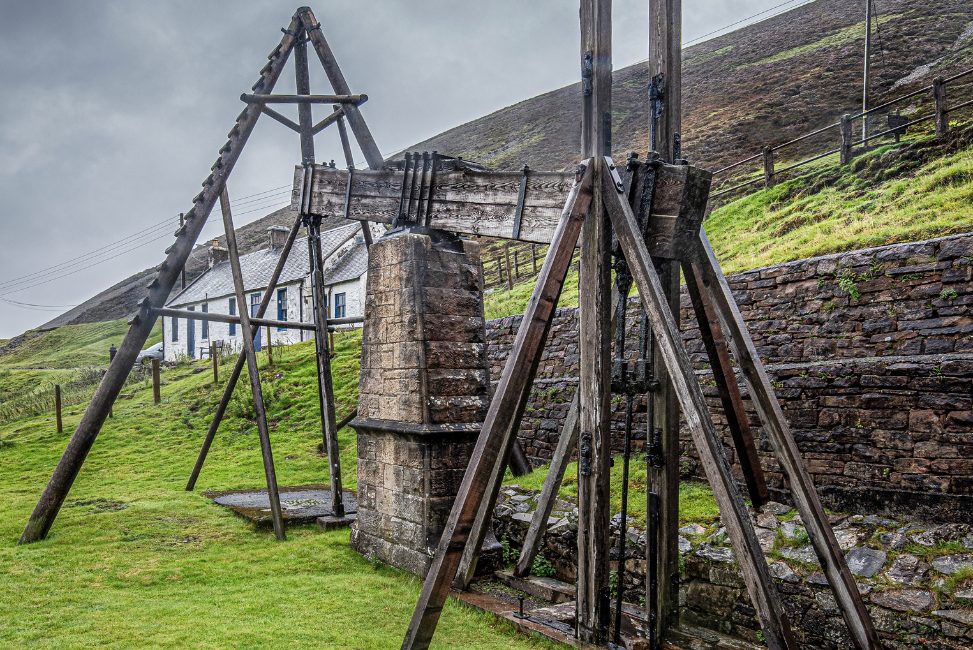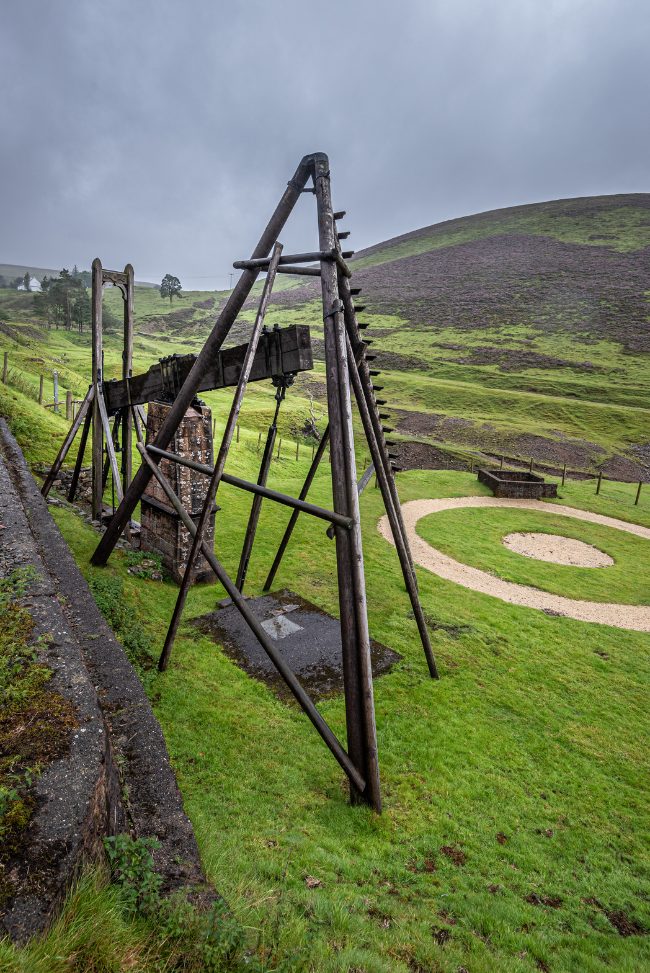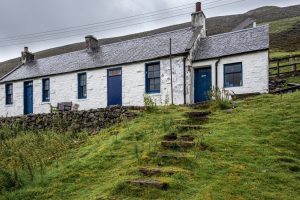Geology pupils visit one of Europe’s most important mineralogical sites
June 15 2023

A Class 9 excursion to the open-air Wanlockhead Museum of Lead Mining in the Lowther Hills, where pupils have opportunity to don a hard hat, stoop into a dripping tunnel, and venture half a kilometre into the Lochnell drift mine. The experience is part of their Main Lesson in Geology.
Lochnell is the only drift mine – horizontally-accessed mine – in Scotland which is open to the public.
At 467m above sea level, Wanlockhead is the highest village in Scotland and lies at the heart of one of the most important mineralogical sites in Europe. First worked by the Romans, the Lowther Hills have for centuries been a rich source of zinc, silver, lead and gold – among other valuable commodities.

Beam Engine at Wanlockhead’s Museum of Lead Mining, situated at the heart of one of the most important mineralogical sites in Europe.
The windswept landscape is dominated by the infrastructure and tailings of old mine workings, while underground, dug out by hand in the hard volcanic rock, a maze of shafts and tunnels extends to perhaps hundreds of miles.
Between 1710, and when the mine finally closed in the 1950s, lead ore (in the form of a mineral called galena) was dug out of Lochnell by local workers, many of whom began work at the age of seven. Now, the museum provides experienced guides.
Above ground, the pupils visit a row of preserved pit cottages to find out what life was like for miners in centuries past. They stop in at the Miners’ Library (the second oldest subscription library in the country) and try their hand at panning for real gold.
The Class was accompanied by Mr Pugh (Upper School Geography Teacher and volunteer miner at the Museum) and the Class Guardian.


